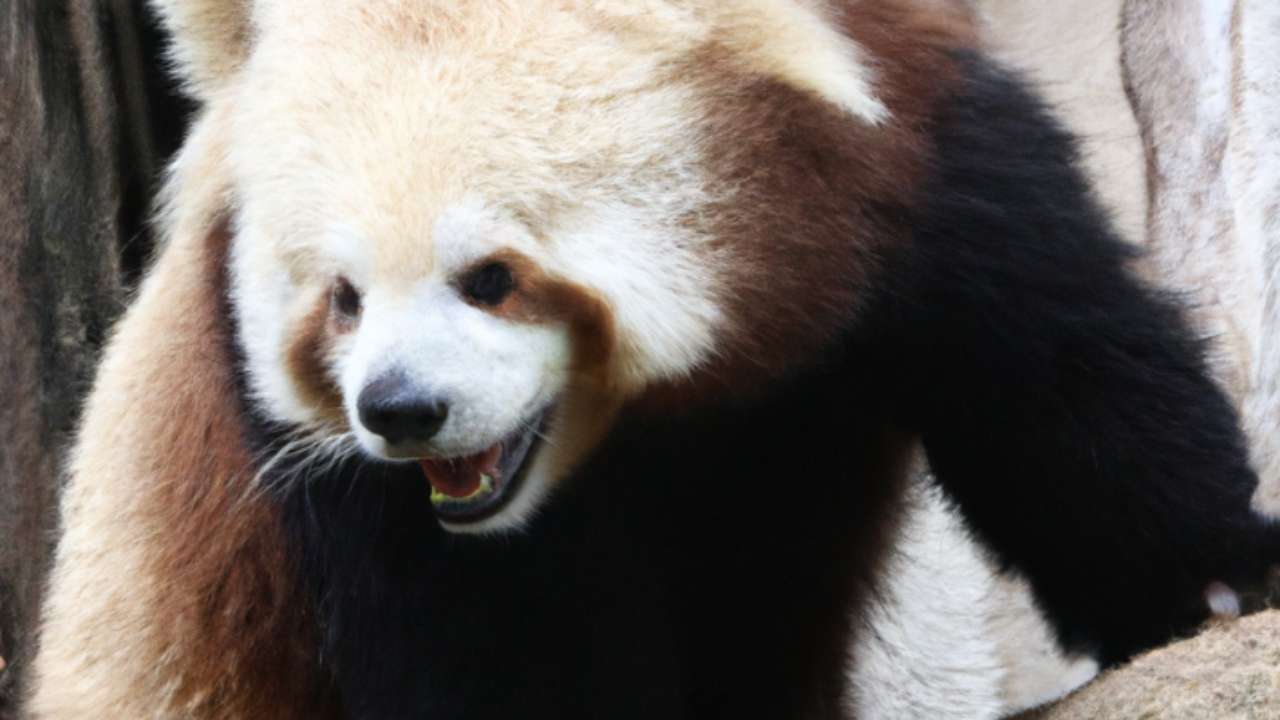NEW DELHI: A rare variant of the giant panda, known not for the conventional black-and-white but for an unusual brown-and-white fur, inhabits just a single mountain range in China. This unique trait, previously shrouded in mystery, has been potentially unraveled by recent scientific research.
This research involved the genetic analysis of numerous pandas both in the wild and in captivity, revealing that the rare brown-and-white coloration is likely due to natural genetic variation rather than the result of inbreeding, as was once speculated, a CNN report said.
Dandan, the first brown panda identified in 1985 in the Qinling Mountains of Shaanxi province, sparked curiosity and subsequent sightings have been recorded, totaling eleven over the years. These sightings have led researchers to believe that the brown coloration could be inheritable, though its genetic basis remained elusive until now.
The study, published in the journal PNAS, took a closer look at Qizai, a male brown panda found in 2009 and currently the only one of his color in captivity. Examination of Qizai and comparison with black-and-white pandas revealed differences in melanosome structure and size, essential for skin and hair pigmentation, the CNN report said.
Further genetic investigation linked Qizai, his parents, and his offspring through a recessive trait identified on the Bace2 gene, pinpointing a specific mutation responsible for the brown fur, found only in pandas from the Qinling Mountains.
Researchers utilized CRISPR-Cas9 gene-editing technology on lab mice to confirm the role of this genetic alteration, observing similar changes in coat color, supporting the theory that the same mutation affects panda fur color.
The mutation’s origin is attributed to the unique environment of the Qinling Mountains rather than inbreeding, highlighting the role of natural variation in species’ physical traits.
This discovery, shedding light on the genetic makeup behind the brown coloration of certain giant pandas, not only enriches our understanding of panda genetics but also aids in the broader efforts of species conservation and management, especially given the vulnerable status of the giant panda. The research represents a significant step in our comprehension of biodiversity and the intricate workings of genetics in the animal kingdom.
This research involved the genetic analysis of numerous pandas both in the wild and in captivity, revealing that the rare brown-and-white coloration is likely due to natural genetic variation rather than the result of inbreeding, as was once speculated, a CNN report said.
Dandan, the first brown panda identified in 1985 in the Qinling Mountains of Shaanxi province, sparked curiosity and subsequent sightings have been recorded, totaling eleven over the years. These sightings have led researchers to believe that the brown coloration could be inheritable, though its genetic basis remained elusive until now.
The study, published in the journal PNAS, took a closer look at Qizai, a male brown panda found in 2009 and currently the only one of his color in captivity. Examination of Qizai and comparison with black-and-white pandas revealed differences in melanosome structure and size, essential for skin and hair pigmentation, the CNN report said.
Further genetic investigation linked Qizai, his parents, and his offspring through a recessive trait identified on the Bace2 gene, pinpointing a specific mutation responsible for the brown fur, found only in pandas from the Qinling Mountains.
Researchers utilized CRISPR-Cas9 gene-editing technology on lab mice to confirm the role of this genetic alteration, observing similar changes in coat color, supporting the theory that the same mutation affects panda fur color.
The mutation’s origin is attributed to the unique environment of the Qinling Mountains rather than inbreeding, highlighting the role of natural variation in species’ physical traits.
This discovery, shedding light on the genetic makeup behind the brown coloration of certain giant pandas, not only enriches our understanding of panda genetics but also aids in the broader efforts of species conservation and management, especially given the vulnerable status of the giant panda. The research represents a significant step in our comprehension of biodiversity and the intricate workings of genetics in the animal kingdom.
Denial of responsibility! Swift Telecast is an automatic aggregator of the all world’s media. In each content, the hyperlink to the primary source is specified. All trademarks belong to their rightful owners, all materials to their authors. If you are the owner of the content and do not want us to publish your materials, please contact us by email – swifttelecast.com. The content will be deleted within 24 hours.


